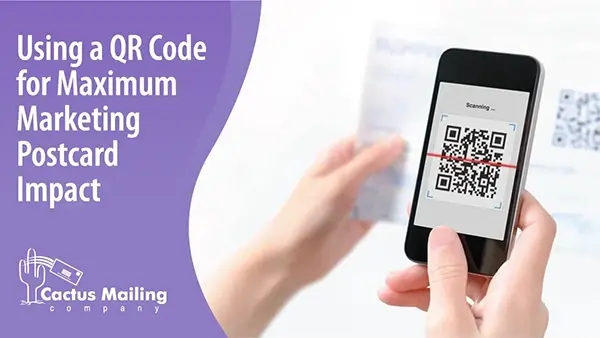We Are Here to Help!
What to Expect from Us:
No Pressure, Just Service!
Get no obligation pricing details and strategies that will work for your business.
Did you know that direct mail marketing offers both the highest ROI of all media and has a response rate above email? That’s right. If you thought direct mailers were out of style… perhaps it’s time to think again!
The marketing industry is constantly evolving. So, as a marketer, you need to stay up to date with the latest trends so you can connect with your audience and remain competitive.
This article has two purposes. On the one hand, it will show you the many benefits of direct mail marketing campaigns and compare them with other types of advertising like emails, social media, and paid search. On the other, it will cover all the things you should watch for in direct mail marketing for the coming years. We’ve got some ground to cover, so let’s get started.
Why Direct Mail Marketing Works
When we talk about direct marketing, we specifically refer to marketing materials that are delivered physically (typically, using the postal service).
One thing is certain: Most advertising today is done digitally. This, in a way, means that direct mail marketing has a chance to truly stand out in a world overflowing with notifications, digital ads, and emails.
So, let’s begin by looking at the different types of direct mailers, their common components, and why they are rising as one of the best options to promote your business.
The Components of a Direct Mailer
Common examples of direct mail marketing include flyers, postcards, letters, and catalogs.
The most effective mailer design is one that is able to boost response rates, convey reputation and legitimacy, and give its audience the ideal next steps they could take.
Most mailers have the following essential components in common:
- A logo or slogan that identifies your business.
- A call to action (what you want the receiver to do when they get the mailer).
- One or more ways for your potential customers to contact you (for example, a telephone number, a website link, or an email address).

As we said, however, the best direct mailing marketing materials are those that can drive responses. So, let’s quickly go through the main ways in which you can use your postcards and brochures to boost your business.
These are some of the elements that improve response rates:
- Clear and compelling headlines that speak to someone’s needs or desires.
- Concise CTAs that inform people of the next best step to take.
- High-quality images that can make an impact on your more visually-driven audience.
- Limited-time offers and incentives that promote quicker responses.
- The main benefits of a product and service (rather than simple features).
Of course, reputation and legitimacy are also concepts that can be expressed through direct mailers. For example, though:
- A prominent logo and consistent branding.
- Accreditations and certifications from recognized industry organizations.
- Security seals and guarantees, particularly around transactions.
- Real reviews and testimonials from satisfied customers.
Lastly, these are some good ways to help customers identify next steps:
- Providing contact information, such as phone numbers, websites, and social media handles.
- Physical addresses to enhance trustworthiness.
- A QR code linking to videos, reviews, or additional information.
The Benefits of Direct Mail Marketing (In Numbers)
The best way to understand why direct marketing can be such a good idea for your business is to look at the return on investment (ROI). The ROI is a calculation that compares the value of your investment in a campaign versus its cost.
For example, if you invest $1,000 in sending postcards to potential customers and you make $10,000 from your effort, your ROI is 900%.
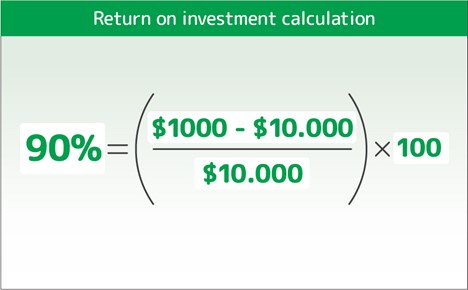
A recent survey from the Data & Marketing Association (DMA) places the median ROI of direct mail marketing at 29%, above paid search and online displays and just 1% below social media advertising. But that’s not all. Other studies have discovered that the response rate for direct mail is higher than other forms of marketing (an average of 5.3% compared to 0.6% for emails).
Postcards, in particular, have the highest response rate of all direct mail formats. Now, combine that with the lowest production costs of all direct mail formats, and you'll quickly see postcards provide the best ROI of all direct mail formats.
It has been found that direct mailers offer one of the best ROIs in marketing (marketers surveyed by ANA reported, in fact, 92% ROI for postcards that are mailed to house lists).
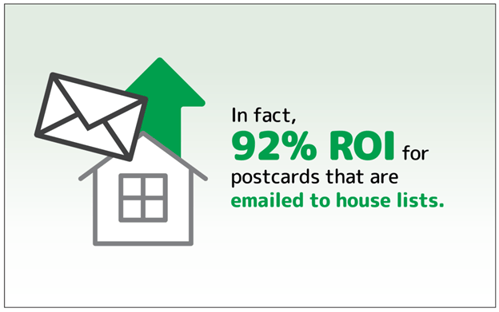
Postcards and Customer Lifetime Value
Calculating your ROI is, of course, important. You will want to know how much profit you got from your investment. However, there is one component that can make your ROI grow even more: Customer lifetime value.
The customer lifetime value, or CLV, represents the total revenue a business can expect to earn from a customer throughout their entire relationship. It is calculated as follows:
The key metrics to find the CLV are the Average Purchase Value (APV, or average amount a customer spends in a single purchase), the Purchase Frequency (PF, or the number of times a customer makes a purchase in a given time period), and the Customer Lifespan (CL, or the average number of years a customer remains active with your business).
So, to give you an example, let’s start by assuming an average purchase is $50 and that a typical customer will purchase the product four times a year (which would result in an annual revenue of $200). Using the CV calculated earlier and a customer lifespan of 5 years, CLV = $200 * 5 = $1,000.
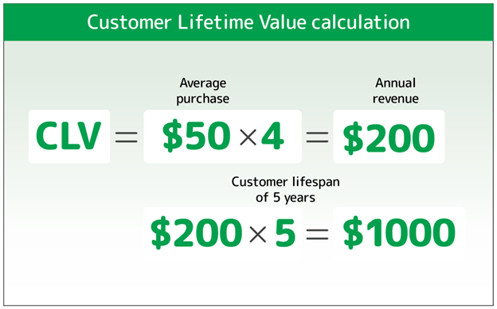
When evaluating the effectiveness of a postcard marketing campaign, it's important to consider both the Initial ROI and the Lifetime ROI, as the two metrics provide different perspectives on the campaign's success.
Direct mail marketing campaigns are not just about making a single sale; they are often a part of a broader customer acquisition and retention strategy. Lifetime ROI accounts for the fact that customers acquired through these campaigns can bring in revenue for months or even years. Postcard marketing in particular, can help build brand loyalty and customer relationships. These customers are more likely to make repeat purchases and refer others, two elements that the initial ROI may overlook.
So, while the initial ROI focuses on the short-term gains, the lifetime ROI considers the enduring benefits of customer relationships. A high Initial ROI may not reflect the campaign's true impact if it fails to retain and nurture customers over time.
In other words, sending postcards to your existing customers helps keep your brand top-of-mind. In other words, they serve as a physical reminder of your business, making it more likely that they will think of you when they need your products or services again. If your postcards include exclusive discounts, promotions, or loyalty rewards for existing customers, this incentive can also encourage repeat purchases.
Other Advantages of Direct Mail Marketing
The numbers we’ve mentioned above are, on their own, quite impressive. But direct mailers have many other benefits, too. So, let’s quickly summarize the advantages of using mailers for your marketing campaigns:
- People can physically handle direct mail, so it’s highly interactive. For example, when a customer receives a postcard, they can instantly feel prompted to try your store or services - particularly if you include a coupon or promotional offer!
- For many households, direct mail can evoke a sense of nostalgia (you know, for when things were a little easier and you didn’t have to worry about social media or full email inboxes). In other words, it can be much more memorable.
- Direct mail has the potential to reach a wider demographic, too. This is particularly the case if your target customers are not particularly interested in social media or digital platforms. Being a more traditional alternative, it has the chance to appeal to people you would miss if you only relied on digital ads.
- Lastly, direct mail (and postcards, in particular) offers you a way to get more creative in your advertising. You can use colors, different fonts, images, and shapes to make your material stand out.
The Recent Resurgence in Direct Mail
The leap toward adopting direct mail as a primary marketing strategy (particularly after the COVID-19 pandemic) has been confirmed by several studies. For example, as it was reported by JICMail, by Q1 2022, mail volumes had reached the highest level in two years. What’s more, the initial forecast for Q2 had been 31%... and the change was an impressive 46.6%!
So, what’s behind this impressive performance? If we had to sum it up, we’d definitely need to focus on memorability and tangibility. Direct mail marketing is also cost-effective and its impact can be easily measured.
According to a study from Lunio, we are exposed to up to 10,000 digital ads a day. It’s no surprise these campaigns don't have much of an impact; they just overwhelm us all! However, a postcard received on the mail has a pretty distinct impact. So much so, that about 25% of direct mail leads to a commercial action.
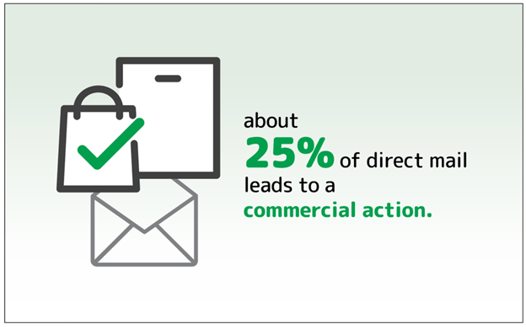
You can touch, feel, and connect with a postcard. You can also keep it around and stick it on your fridge. So, whether you use it as a single campaign or part of a multi-channel approach, you can’t really afford to ignore this valuable resource!
Direct Mail Marketing Trends For 2023 And Beyond
Now that we’ve covered the benefits of direct mailing campaigns, it’s time to take a look at what we can expect for this industry in the coming years. Because, even though this type of advertising can sometimes be seen as ‘too traditional’, this cannot be further from the truth.
Addressable Geofencing
A new digital marketing technology that is proving a game-changer for the industry is addressable geofencing, or the ability to merge physical and digital strategies. The geofencing market, in fact, had an estimated size of USD 1.95 billion in 2022, and it’s expected to grow at a CAGR of about 21.7% for the period 2023-2030. And the largest segment? Retail, which had over a 20% revenue share last year alone.
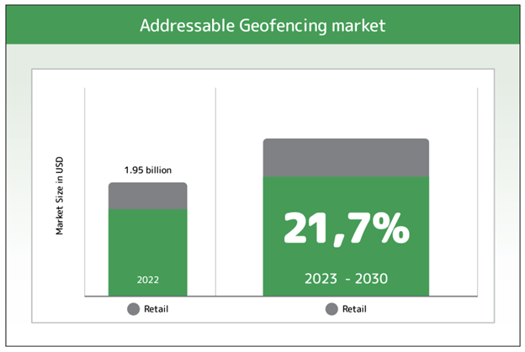
Addressable geofencing combines location-based targeting with online advertising to reach specific individuals or households based on their physical addresses. In other words, you create a virtual "fence" or boundary around a particular geographic area (which can be a neighborhood, a city block, or even a single building), and then serve ads within that defined area.
One of the biggest advantages of addressable geofencing is its ability to help your business reach potential customers with pinpoint accuracy. So, you can tailor your direct mail campaign to specific neighborhoods or areas where your message will be more relevant.
But there is more. By targeting a specific, well-defined audience, you can also reduce advertising waste. This means you can allocate your marketing budget more efficiently by reaching individuals who are more likely to convert.
Integration With Digital Channels
A multi-channel approach can help enhance your campaign effectiveness and reach a broader audience. This is a growing trend in the marketing world, too, as businesses in 2023 continue to recognize the benefits of combining the physicality of direct mail with the reach and engagement of digital platforms.
The multichannel marketing industry is growing rapidly, and we can expect a CAGR of 22.3% by 2030. The total industry value? About $28.6 billion!
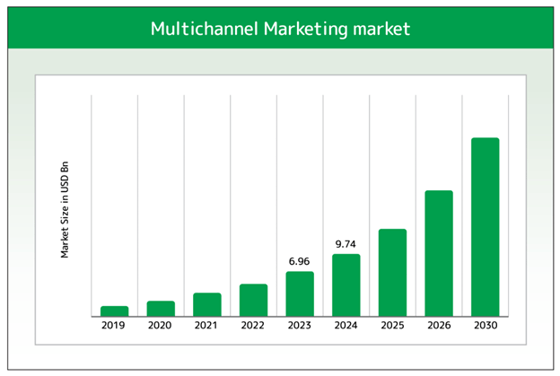
Now, let’s look at the average number of channels used by marketers. About 52% of marketers use 3 to 4 different marketing channels - although some go as far as utilizing eight! So what all of this translates into is that it’s definitely a good idea to integrate your direct mail marketing with digital channels.
According to a study by HubSpot, 82% of marketers use content marketing and 60% of them measure success via sales. The primary forms of media are, in order of importance, videos, blogs, infographics, case studies, interviews, eBooks, and white papers.
If these numbers are not impressive enough, campaigns that combine at least four channels can outperform those using one or two by 300%.
So, what does all of this mean? In the coming years, do not forget to expand your direct mail campaigns with some additional digital channels.
More Concise Mailers
We know that 82% of people in the United States have a higher level of trust in advertisements that are printed. It is easy to understand that good content is essential to a successful direct mail campaign.
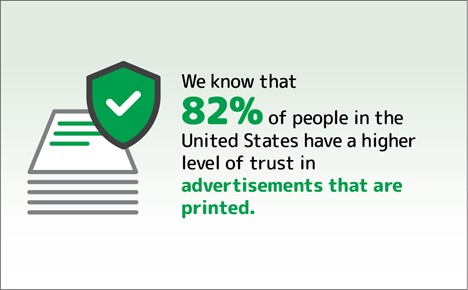
Before, we had seen a tendency towards including more content into marketing materials, mostly with the purpose of educating, engaging, and providing meaningful information. Many direct mailers had also turned to real-world examples of how a product or service can help potential customers. For instance, using case studies and testimonials.
Now, there is a trend in direct mailers, including postcards, to communicate marketing messages more concisely. This can be attributed to several factors, including changes in consumer behavior, information overload, and the need for a more immediate impact.
Consumers are bombarded with marketing messages from multiple channels, including email, social media, and traditional advertising. So, focusing on delivering concise postcards with clear, to-the-point messaging is more likely to engage the audience.
So, what does this mean, exactly? We're talking about postcards that focus on one or a few key calls to action. This clarity makes it easier for recipients to understand what is expected of them and encourages them to take immediate action.
So, brevity is key. A postcard can deliver a single and compelling message.
Tracking Methods
One of the first things any company should do when starting a direct mail campaign is define a set of desired goals. Ideally, through objectives that can be measured. For example, if you have a store, your goal could be a certain number of purchases.
There are three main tracking methods that have grown in popularity in the last few years. These are coupon codes, call tracking numbers, and QR codes.
Including unique coupon codes on your postcards (that recipients can redeem online or in-store) is an excellent way to track purchases. Each code is associated with a specific campaign or mailing list, so it provides a clear link between the mailer and its conversion. We know for a fact that coupons work. According to a 2023 survey from Coupon Science, 91% of respondents reported using them in the last year. What’s more relevant, coupon codes can change regular customers’ behavior in 83% of cases.
Call tracking numbers, which use unique phone numbers for each postcard campaign and route calls to your main business line, can also help you measure response rates and gauge the effectiveness of your postcards in driving phone inquiries.
And, of course, QR (or Quick Response) codes, those two-dimensional barcodes that can be scanned using a smartphone camera, are great for tracking how many recipients have scanned it to access a specific landing page, coupon, or offer. And they are fairly popular, too. According to a study from The Drum/YouGov, about 54% of people 18-29 had used them in the past three months (the average for people of all ages was 45%). Younger generations were also found to be more likely to adopt QR codes permanently.
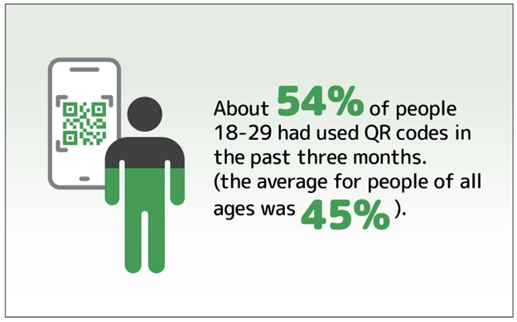
Measurement and Analytics
Did you know that, for medium and large companies, first-party data is considered the most important digital media strategy? According to a Nielsen study, 85% of small and 86% of medium and large companies see it that way.
As we have covered above, data is king, as measurement and analytics in direct mail enable data-driven decision-making. By collecting and analyzing data, your direct mail business can gain valuable insights into campaign performance, customer behavior, and ROI.
We know that about 60% of direct advertising mail is opened by the recipient and 40% are read.
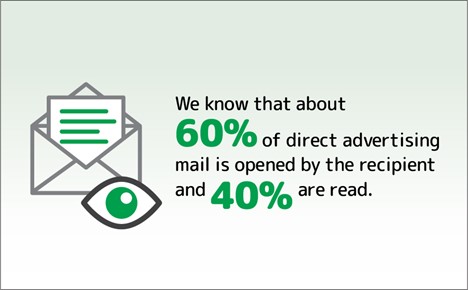
We also know that chief marketing officers spend approximately 6.5% of their marketing budget on analytics. This, alone, should show how important it is to understand a campaign’s performance. For one, evaluating how a campaign does can help determine its ROI. But also, you can gauge its effectiveness in achieving its intended objectives, such as sales targets, lead generation, brand awareness, or social impact.
So, what are some of the things you can track as a marketer? For starters, not only the delivery of the mail but also recipient actions, such as call-to-action responses, coupon redemptions, form submissions, and online conversions, among others.
Make sure you use data analytics and measurements to assess performance and tailor your campaigns based on these insights. Analytics are, after all, one of the most important aspects of any marketing project!
Conclusion
In this article, we have covered the latest trends in direct mail marketing and what we can expect to see for the industry in the coming years. We learned that, far from slowing down, mailers have become one of the most effective marketing strategies there are, with an impressive ROI and response rate. So, in a landscape filled with economic uncertainty, mail continues to be a strong choice.
So, why not give postcards a chance? No matter what your business is, you can trust that Cactus Mailing is the best choice when it comes to mass mailing marketing campaigns. We have helped over 17,000 companies obtain new customers and increase their sales.
Contact us today to get a free marketing plan.

 Nick Ryan: Oct 26, 2023
Nick Ryan: Oct 26, 2023

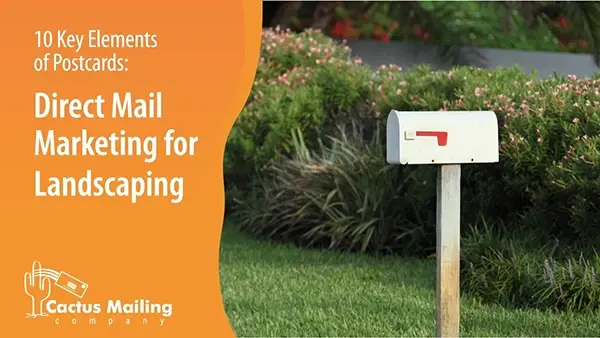
 Mike Ryan
Mike Ryan